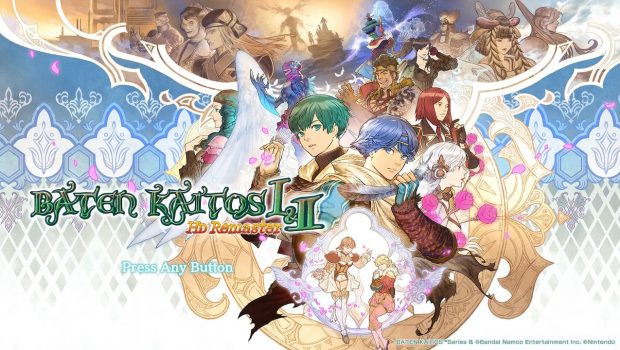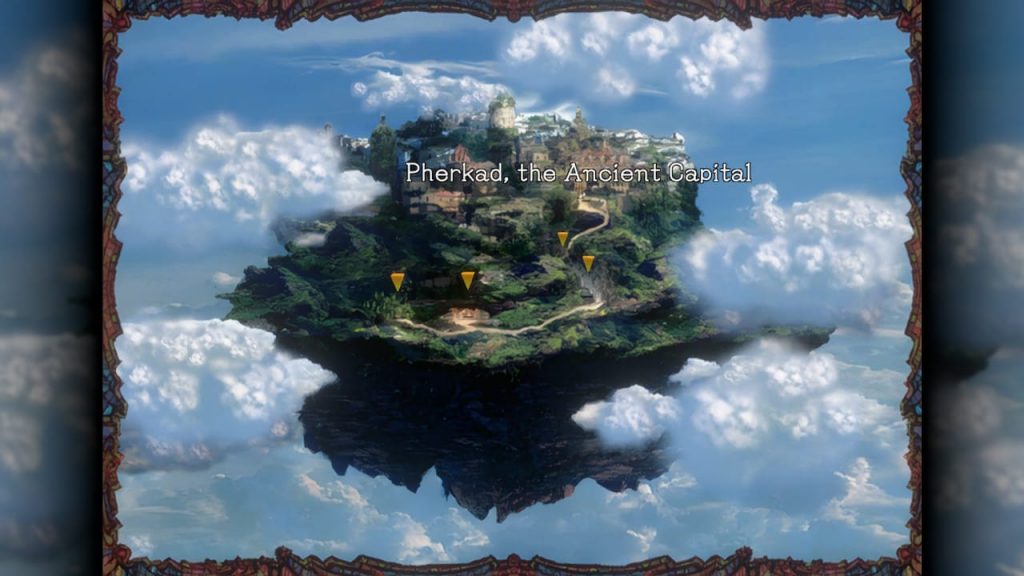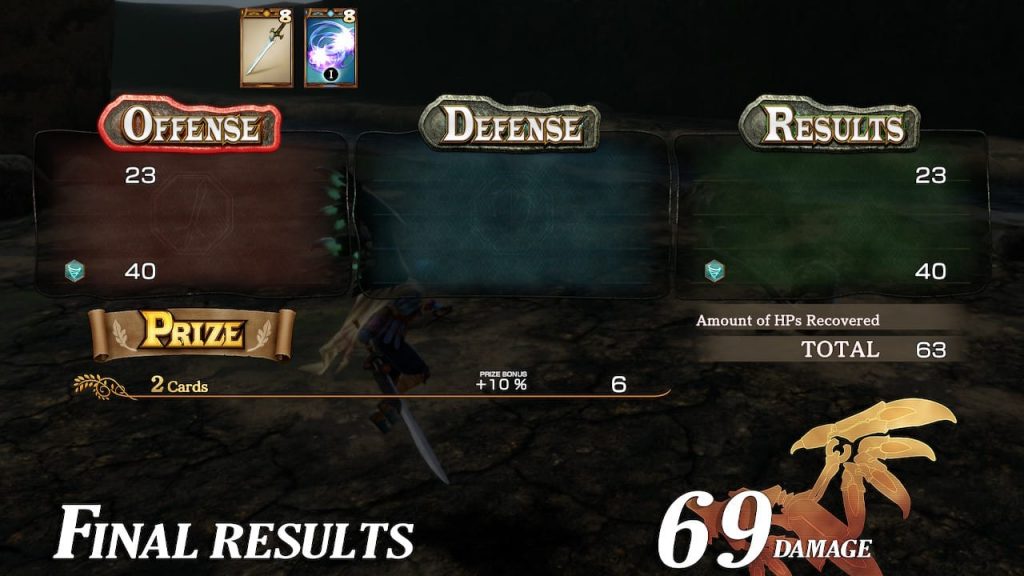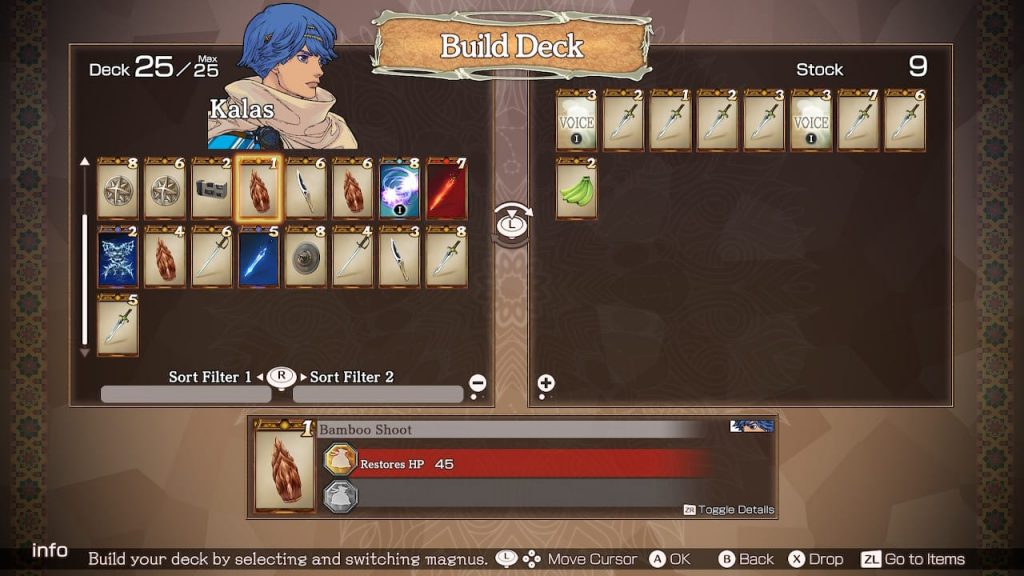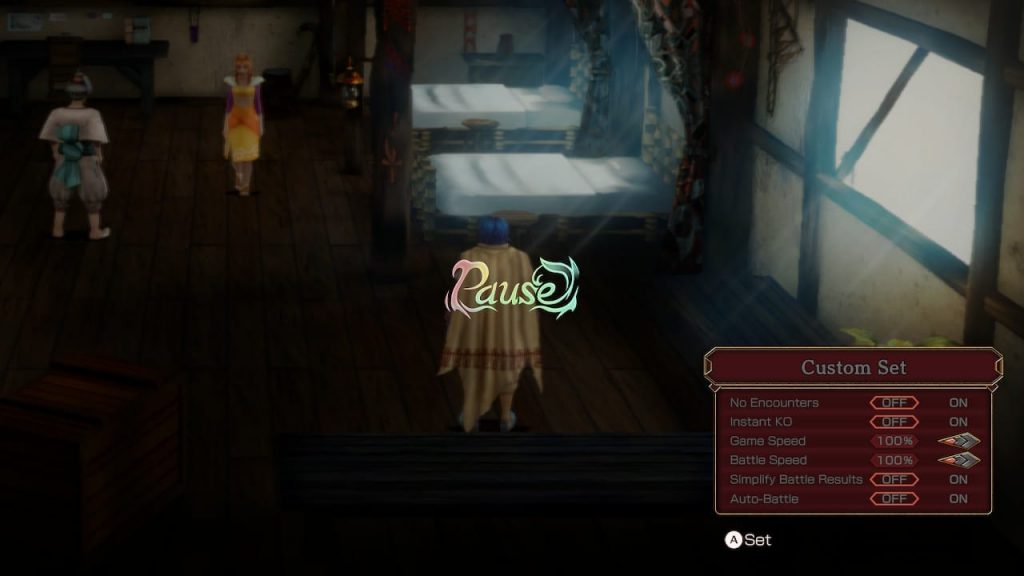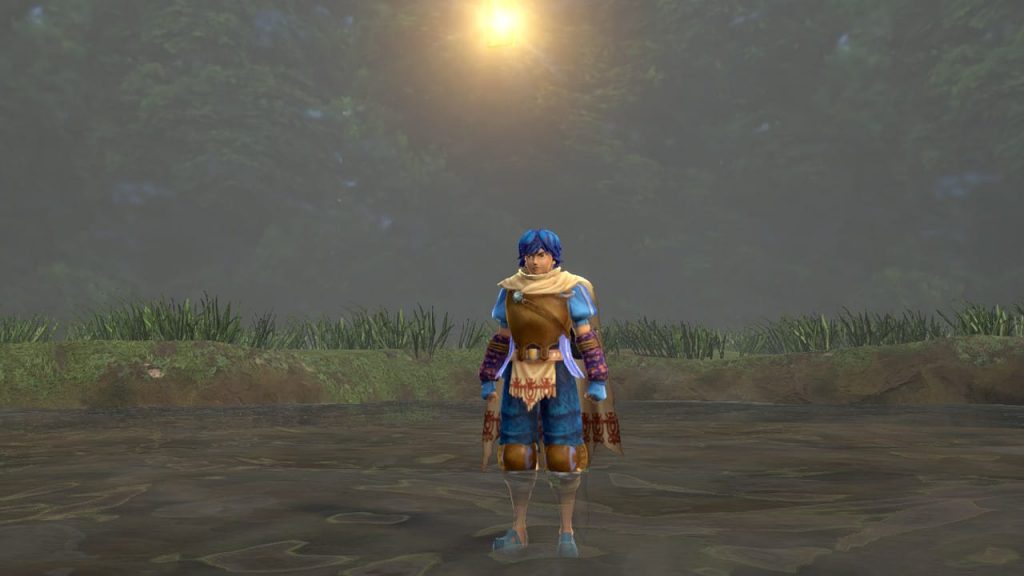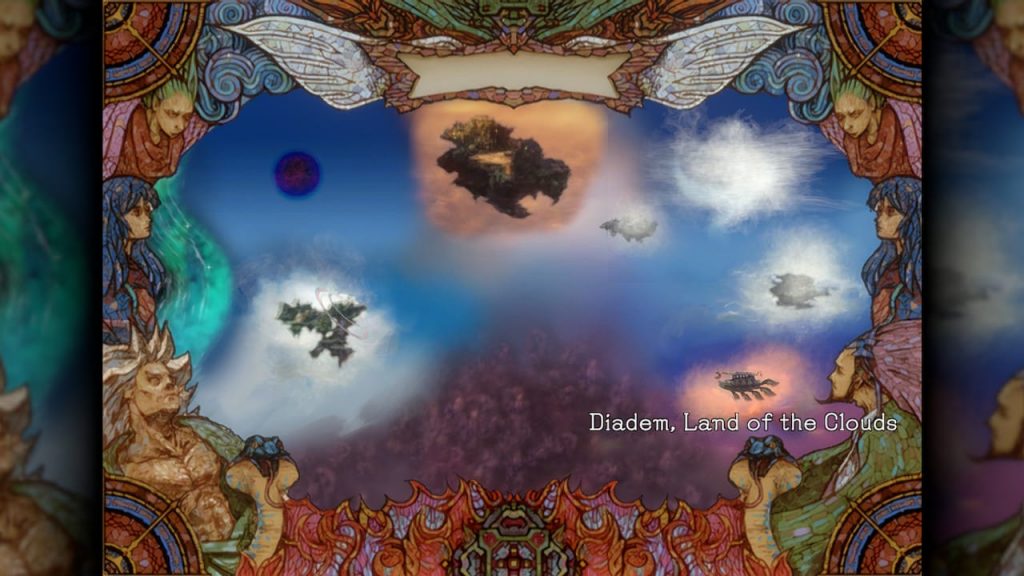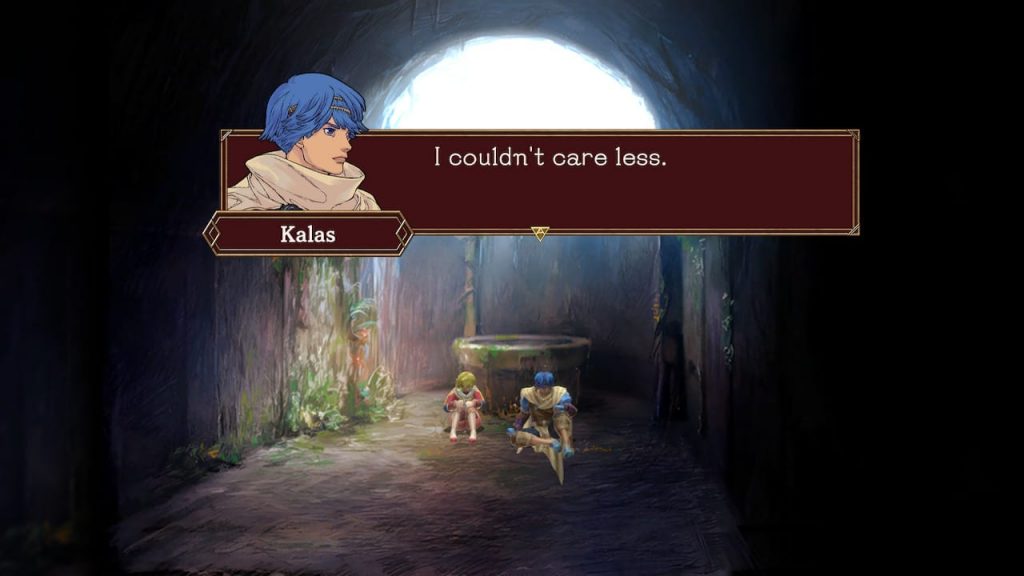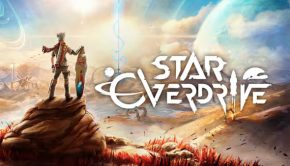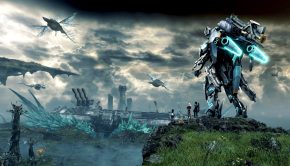Baten Kaitos I & II HD Remaster Switch Review
Summary: Baten Kaitos I & II HD Remaster brilliantly showcases Monolith Soft’s signature worldbuilding and storytelling abilities, but exhausting battles and overworld exploration also expose the originals’ age. The remaster’s improvements – despite their lackadaisical implementation – manage to at least make some of this duology’s worst aspects passable.
3.3
Too slow and too fast
With the release of their very own Xenoblade trilogy and the support role they played in the development of games in three of Nintendo’s most successful franchises on their latest system – Zelda, Splatoon and Animal Crossing – there is no other game developer quite as synonymous with the success of the Switch in my mind as Monolith Soft. Said Xenoblade trilogy made a fan out of me, and I can’t wait to see what they’re cooking up for the inevitable “Switch 2”. In the meantime, two of their older titles – Baten Kaitos: Eternal Wings and the Lost Ocean and Baten Kaitos Origins – were given new life on the Switch as a package deal named Baten Kaitos I & II HD Remaster. Two whole Monolith Soft games – that are basically brand new for most people, including myself – to play while we wait for their next project? Sign me up! My question is: did these games stand the test of time – how do they hold up in 2023? Let’s find out.
In an unexpected twist that will shock absolutely no one, Monolith Soft fans least of all – the Baten Kaitos games are JRPGs: explore a fantasy world, fight monsters, and experience a long, sprawling narrative. When I think about what makes this duology stand out then, it is the combat – so let’s start there, specifically with how Baten Kaitos I handles it. In that game, each character has their own deck of cards – with some of them being character exclusive and others usable by anyone. These cards – called magnus within the Baten Kaitos universe – function as attacks, “shields” against enemy attacks, and ways to heal/buff party members. The turn based battles are divided into two phases: an offense phase in which a party member gets to use cards to either attack or heal/buff, and a defense phase in which the enemy gets to attack and a party member can use cards with defensive capabilities to defend and decrease damage. As the game progresses, your decks will grow larger and you’ll be able to use more cards after one another during the offense phase.
This all sounds relatively simple in theory, but there are more things to take into account when battling. Most notably, each card’s spirit number(s). These range from 1 to 8, and using cards with the same number (such as three cards with the number 8, called a “pair”) or cards with numbers in ascending or descending order (such as three cards with the numbers 8-7-6 or 6-7-8, called a “straight”) will increase the damage of the combo. Furthermore, there are six potential elements a card can have – each element also has an opposing element, such as light opposing dark and vice versa. Not only do enemies have resistances and weaknesses to specific elements – if one were to use opposing elements in the same combo, they “cancel each other out” and then the amount of damage the combo does will be reduced.
All of these aspects do a good job in making the combat system deeper (and there are things about it I haven’t even mentioned) – as a concept, I think it’s pretty neat. In execution though, I unfortunately found too many things to dislike about it. My main grievance is with the overwhelming pace you’re expected to play the cards you want. Usually, an RPG becomes more fun over the course of its runtime as you unlock more options and are able to use those options for increasingly elaborate strategies. In Baten Kaitos I, the more options you unlock, the less time you are given to even think about those options. At the beginning of the game, you’re given (a very generous) infinite time to think about your moves at the start of a turn. As your characters class up this time limit becomes smaller and smaller, from 30 seconds to ten seconds – and by the end, it dwindles down to a measly five seconds. Not only that, if you wish to play multiple cards (whether that’s during offense or defense phase), good luck – you have less than five seconds to pick those too, regardless of where you’re at in the story. Once cards start having multiple spirit numbers that process becomes even harder, as you have to flick the right control stick in the direction of the number you desire in order to play a card – this is somehow remarkably finicky, and I cannot count the amount of times my input either didn’t register or picked the wrong direction, ruining my straight/pair. Why they couldn’t use the face buttons for these inputs is beyond me, because they’re not used for anything else during combat anyway.
My secondary grievance comes in the form of nearly everything that has to do with deck management. A good deck consists of a balance between attacking, defending and healing cards – but therein lies the problem. As far as I can tell, what cards you get at the start of a battle and what cards you subsequently draw from the deck after using cards, seems to be random. And that can lead to offense and defense phases where you’re basically unable to do anything useful – an offense phase where (almost) all you have is defensive cards, or a defense phase where you have (minimal to) no cards to defend with. Getting a good turn in which you defend well and/or pull off a straight/pair combo doesn’t even feel that great – it mostly feels like luck, especially when the decks start getting bigger. Decks being split up into attack, defense and healing in some way – with you being able to choose between those three options at all times – might’ve helped in remedying this. When it comes to actually building the decks outside of battle, this also becomes less and less fun as the game goes on. Six party members with 50 cards each is rather exhausting to keep track of – especially when I have to filter them to my preference again when I replace even a single card.
However, this is the moment where I am pleased to announce that everything I’ve talked about so far is improved on in Baten Kaitos Origins. The entire party has just one single deck that is shared between them, the defense phase is gone – “replaced” by having weapons/armor as magnus that you can play to increase attack/defense stats during battle for a limited amount of attacks – and cards only have a single spirit number. Furthermore, the only way to even attack multiple times at all is by pulling off straights – the spirit number of basic attack cards only go up to 3, with the numbers 4-6 reserved for different character specific finishing moves.
While I like Origins’s version of the battle system more, the problems of its predecessor persist in other ways. Having only one deck is nice for building, but since there are still character exclusive magnus, it is nevertheless possible to find yourself at the start of a turn not being able to do much – and considering this game only has three party members anyway, I think it actually would’ve been fine for them to have separate decks. Although the time limit at the start of a turn is technically gone, the time limit for picking multiple cards remained. Not only that, the battles now have a sort of fluid turn order, in which characters pick their cards and are then on cooldown until both a timer has expired and the rest of the party as well as the enemies have had their turn. If you don’t pick cards fast enough the enemies can just start attacking you, they don’t need to wait for the turns of your party members – so the gameplay ends up having the same hasty pace of the original regardless.
I’ve been talking a lot about combat so far, but how does Baten Kaitos fare when you’re not fighting enemies? The magnus that are at the heart of its battles are also integral to progression on the overworld – they can store the essence of any object within, enabling you to take practically anything you require from one place to another. This feature is used in both puzzle solving and for sidequests. Need to put out a fire? Take the essence of water from a nearby fountain, and voila. When I look back at the areas I explored though, I can’t say I was a fan of most of them from a game design perspective – they either feature weird gimmicks that unnecessarily slow down your progress or have annoying to traverse lay-outs. Compounding this are the enemies on the overworld – if you leave a screen and come back (something you won’t really be able to avoid), they respawn. Want to escape a battle? Well, you’d have to draw that specific magnus out of your deck first.
Luckily, this is where the remaster comes in and saves the day – there’s a menu you can bring up at any point in both games (except during battles) with the + button, and this allows you to turn encounters on and off at your leisure. This menu also gives you an auto-battle function, the option to remove the comprehensive damage results screen for Baten Kaitos I, and the ability to speed up the game and/or its battles (separately from each other) by 200/300%. I sped up the game by 200% an hour in and never looked back – the combination of the sluggish movement, slow animations and respawning enemy encounters at times made me genuinely question how people put up with this duology when they first released, especially I. The lengthy animations make battles take even longer (again, most notably in I), so I definitely sped those up as well – until I quickly found out that this actually ruins the gameplay. Remember when I discussed not having enough time to pick cards, both at the start of a turn and whenever you want to play multiple of them during either offense or defense phase? Speeding up battles doesn’t just mean speeding up animations – it means speeding up battles in their entirety, and that includes the offense and defense phases. I don’t know what this game’s playtesters were doing, but I do know one thing – the developers did not exactly think this through.
There is one more option from the “quality of life menu” that I have not talked about yet, because it may be the most telling one: the instant KO. With this turned on, any attack from any character kills an enemy in a single hit. Don’t get me wrong, I love accessibility options – I’m glad this is in the game, I’m not ashamed to say that I made use of it whenever I didn’t have it in me to endure the long battles. However, I can’t help but think this says a lot about the mindset the developers had regarding this remaster – imagine being this unconfident in your gameplay, to the point that you thought it might be good idea to include an option that lets players basically skip it completely.
Again, I’m happy these QOL features exist, they make Baten Kaitos I & II much more bearable then they would be otherwise – but at the same time, I’m frustrated about the fact that I’m practically forced to pick either tedious but also somehow too fast combat, or non-existent combat. There is nothing in the middle of those two extremes – I don’t need the game to play itself, I would simply like it to be a little bit easier, or at least give me the choice to remove that goshdarn time limit. It’s the overall implementation that’s the problem – between the ill thought out battle speed up option and the lack of difficulty options that aren’t “all or nothing”, it feels like the remaster is only willing to do the bare minimum to make Baten Kaitos acceptable for a modern audience. And that is disappointing because I think the games are just a few changes away from being truly enjoyable – to more people than ones that are good at picking cards very fast, anyway.
Being disappointed at the remaster part of this remaster extends to the graphics. I mean, they do look better than the originals, as a remaster should – it has a higher resolution, there are touch-ups to textures, the UI is slicker – but all of that is only noticeable when you see a side-by-side comparison. It’s certainly not a complete graphical overhaul – for all intends and purposes, they still appear and feel like GameCube games to me. Only the expressive character portraits are something I could feasibly see in a game coming out today – good thing too, because the character models are kind of ugly by contrast. While the Baten Kaitos world isn’t particularly pretty from a pure graphical perspective – it is absolutely gorgeous from an artistic perspective. All of the different landscapes – from simple towns to castles covered in clouds – are beautifully designed and have distinct visual identities.
This leads me to the worldbuilding. If there is one thing I know Monolith Soft is good at, it’s creating imaginative, authentic feeling worlds – and Baten Kaitos is no different. As a result of a war between humans and gods a thousand years ago, the earth became inhabitable – so using the power of the gods they lifted five islands up into the sky, with humans eventually evolving to grow wings as a result. This is a world with lore, with history, with ordinary people living their lives – and with unique concepts leading to happenings that could only take place in and effect this specific world. The games have some delightful dialogue as well – I could tell the localizers had fun. While the worldbuilding may be up to the standard I would expect from Monolith Soft, the soundtrack is not. Outside of a few battle themes – Giacomo’s one is particularly great, in both I and II – the music simply doesn’t stand out all that much. The area themes work perfectly fine in the moment, but they’re not something I’ll think about again now that I’ve put the games down.
Despite the amazing worldbuilding, I would classify Baten Kaitos I’s actual story as merely okay. The premise is simple: stop the Empire from finding all of the End Magnus – of which each island houses one – and using them to resurrect the most evil god (Malpercio) from the ancient war. The main character Kalas also wants revenge against the previously mentioned Giacomo (who is currently working for the Empire) for killing his brother and grandfather. You, the player, assume the role of Kalas’s “guardian spirit” – occasionally talking to him through dialogue trees – which is certainly one of the more novel ways I’ve seen a game incorporate the player into its narrative.
Unfortunately, Kalas’s snarky attitude towards almost anything unrelated to furthering his revenge quest – as well as the fact that we don’t actually experience his trauma firsthand, it takes a long time before we even see the event in a flashback – made it hard for me to connect with his character. The five characters joining him on his adventure don’t fare much better – there are few meaningful conversations between them (the game is sorely missing something akin to Xenoblade’s heart-to-hearts) and they don’t feel relevant enough to the plot. The structure of the story is also quite repetitive for the most part – go to one of the islands, talk to its leader, find the End Magnus, move on to the next island. The game has one genuinely good plot twist, but its repercussions are sadly backpedaled on and don’t get the weight they deserve.
Just like with the gameplay, Origins steps up to the plate and improves the storytelling by a huge amount. It manages to beautifully recontextualize I’s lore while also telling a touching and compelling stand-alone story. Taking place 20 years before the events of the first game, the Empire once again needs to be stopped – this time from taking over the other islands with technology and erasing their culture in doing so. We see the devastating effects of this “promachination”, as the game calls it, with our own eyes – which makes us genuinely invested in the struggles of our heroes as they attempt to halt it.
Speaking of heroes, I love this game’s cast of characters. The party may only consist of three members, but that means they’re all actually able to get an appropriate amount of time in the spotlight. Sagi reminds me of Xenoblade’s Rex in the best ways possible – a kid with a heart of gold trying to make a difference in a cruel world. His companions Guillo and Milly have a very entertaining dynamic – the constant verbal abuse they hurl at each other after they first meet slowly transforms into playful banter over the course of the game. In stark contrast to I, where even at the end of the story the six main characters still felt like acquaintances, the bond these three share is incredibly palpable – and as a result, all of Origins’s emotional moments land and feel earned.
Final Thoughts
As you would expect from the genre, both of the Baten Kaitos games are quite lengthy. Even if you use the speed up features like I did, they could still easily take you anywhere from 40-60 hours to beat. In that sense, Baten Kaitos I & II HD Remaster is definitely a solid bang for your buck – but how many of those hours are genuinely fun? That heavily depends on if you can put/keep up with the battle system – and even then the other aspects of the duology aren’t winning awards either, with the exception of Monolith Soft’s signature worldbuilding. The “quality of life menu” defines the remaster, for better and for worse – if its implementation was more mindfully done it could’ve actually made the originals great, instead of merely showcasing how flawed they were and making their worst parts more tolerable. I’d be willing to overlook these flaws – especially in the case of Origins because of its story and characters – if only they just let me pick my cards in peace. From my perspective, its age is the primary thing that holds the series back – in fact, I have no doubt that if Monolith Soft were to make Baten Kaitos 3 today, it would be amazing. I don’t know who to recommend Baten Kaitos I & II to though – I suppose big JRPG fans could do worse for the price, as long as you’re aware of what you’re getting into.


